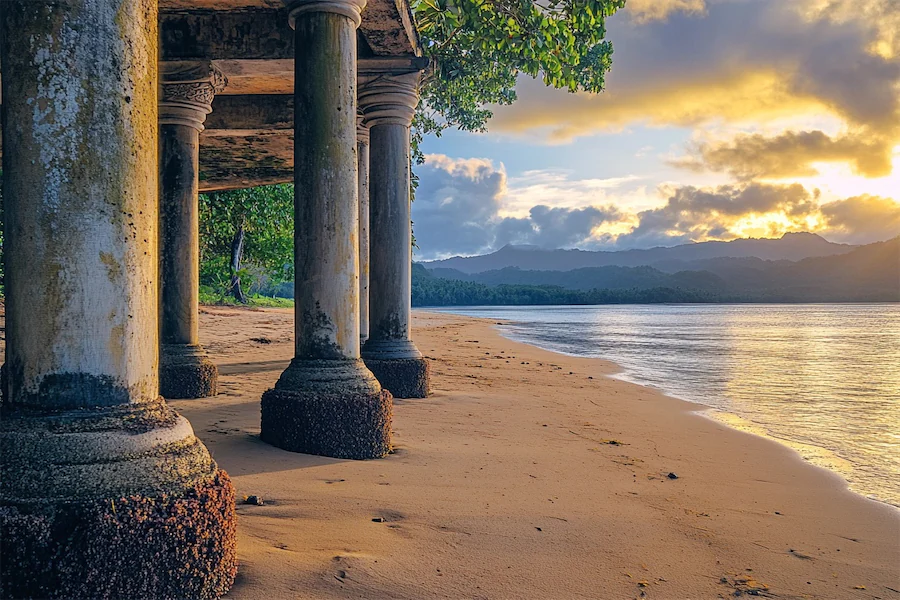The South Pacific region encompasses a diverse array of cultures and architectural styles, each uniquely adapted to their environment and social structures. A fundamental element across these varied architectures is the use of columns or posts, which serve both structural and symbolic purposes. These supports are integral to the construction of traditional buildings, reflecting the ingenuity and cultural significance embedded in South Pacific societies.
History and Origins of South Pacific Columns
Traditional South Pacific architecture is deeply rooted in the practices of indigenous communities, who developed building techniques suited to the tropical climate and available materials. In Samoa, for instance, the construction of a fale (house) involves central supporting posts known as poutu, which are crucial for the stability of the structure. These posts are typically made from locally sourced timber and are erected with communal effort, highlighting the collective nature of Pacific societies.
Similarly, in Maori architecture of New Zealand, the poutokomanawa (central ridge post) is not only a structural element but also holds symbolic significance, often representing the heart of the ancestor whom the house embodies. This illustrates the deep connection between architecture and lineage in Maori culture.
Key Features of South Pacific Columns
South Pacific columns exhibit several distinctive features:
- Material Usage: Predominantly constructed from native timbers, these columns are selected for their durability and availability. The choice of wood varies by island and cultural group, reflecting the intimate knowledge of local resources.
- Structural Functionality: Columns often support large, open communal spaces without the need for interior walls, facilitating ventilation and social interaction. For example, the Samoan fale utilizes a series of posts to uphold a domed roof, creating an open and airy environment suitable for the tropical climate.
- Symbolic Ornamentation: In many cultures, columns are adorned with carvings that tell stories, depict ancestral lineage, or convey spiritual beliefs. The Maori poutokomanawa, for instance, is often intricately carved to represent tribal narratives and genealogy.
Applications of South Pacific Columns
Columns are central to various traditional structures across the South Pacific:
- Communal Buildings: Structures like the Samoan fale tele (large meeting house) rely on a network of columns to support expansive roofs, accommodating gatherings and ceremonies.
- Religious Structures: In Fiji, the bure kalou (spirit house) features prominently placed columns that elevate the sacred space, underscoring its spiritual importance.
- Residential Dwellings: Elevated homes in regions like Vanuatu use sturdy wooden posts to raise living spaces above ground level, protecting inhabitants from flooding and pests.
Considerations When Choosing South Pacific Columns
When incorporating traditional South Pacific column designs into modern architecture or restoration projects, consider the following:
- Cultural Sensitivity: Ensure that the use and representation of traditional designs respect the originating culture’s values and meanings. Engaging with local communities and cultural experts is crucial to maintain authenticity and honor heritage.
- Material Sustainability: Select materials that are not only true to the original constructions but also sourced sustainably to preserve the environment. Where traditional timber is used, consider the impact on local forests and opt for responsibly harvested wood.
- Climatic Adaptation: Recognize that traditional designs are tailored to specific climatic conditions; adaptations may be necessary to suit different environmental contexts while preserving the essence of the original architecture. For instance, ensuring adequate ventilation and protection from local weather patterns is essential.
Conclusion
Columns in South Pacific architecture are more than mere structural elements; they embody the cultural, spiritual, and communal values of the societies that built them. Understanding their historical context and distinctive features allows for a deeper appreciation and more respectful integration of these designs into contemporary architectural practices.
